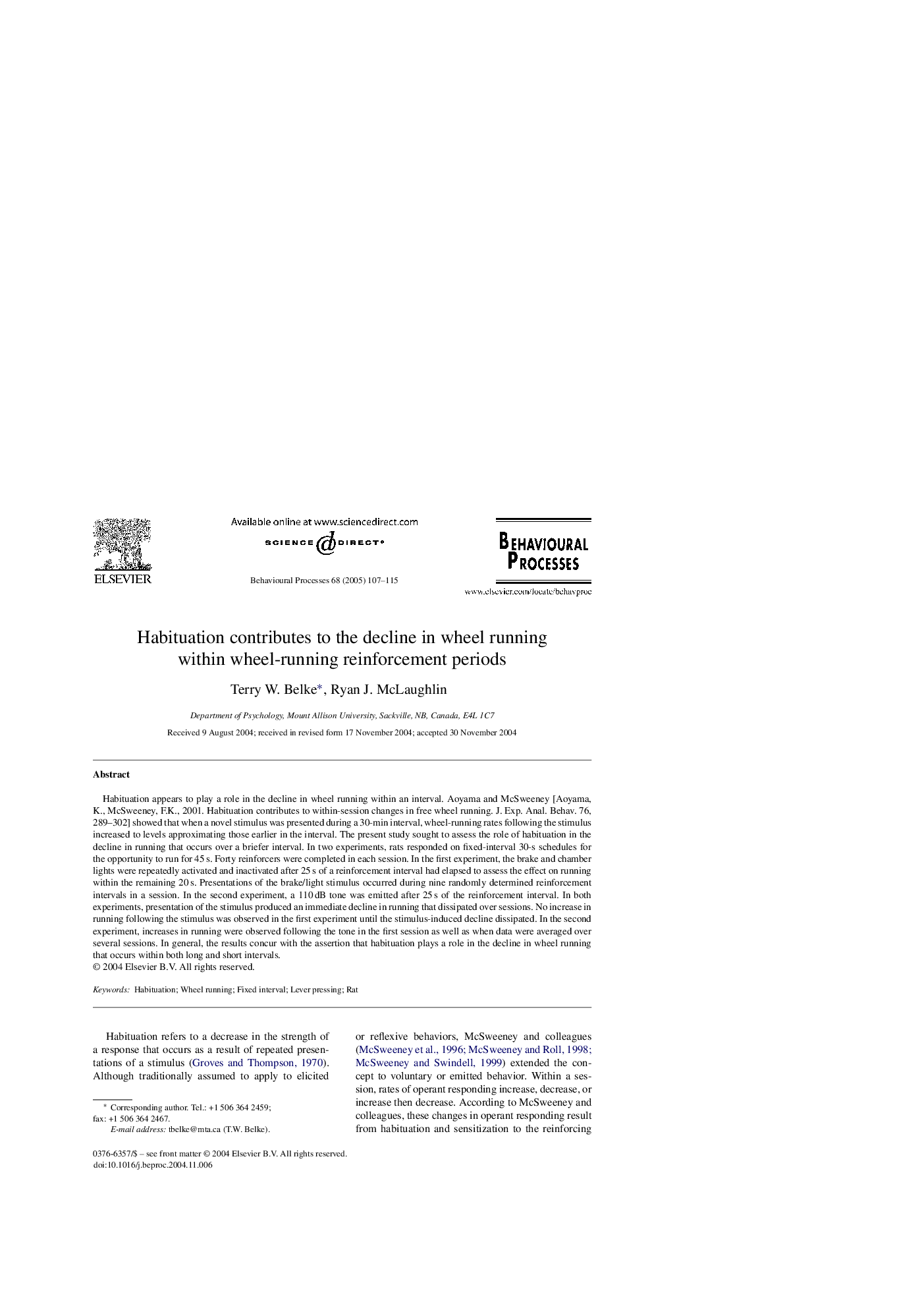| Article ID | Journal | Published Year | Pages | File Type |
|---|---|---|---|---|
| 8977517 | Behavioural Processes | 2005 | 9 Pages |
Abstract
Habituation appears to play a role in the decline in wheel running within an interval. Aoyama and McSweeney [Aoyama, K., McSweeney, F.K., 2001. Habituation contributes to within-session changes in free wheel running. J. Exp. Anal. Behav. 76, 289-302] showed that when a novel stimulus was presented during a 30-min interval, wheel-running rates following the stimulus increased to levels approximating those earlier in the interval. The present study sought to assess the role of habituation in the decline in running that occurs over a briefer interval. In two experiments, rats responded on fixed-interval 30-s schedules for the opportunity to run for 45Â s. Forty reinforcers were completed in each session. In the first experiment, the brake and chamber lights were repeatedly activated and inactivated after 25Â s of a reinforcement interval had elapsed to assess the effect on running within the remaining 20Â s. Presentations of the brake/light stimulus occurred during nine randomly determined reinforcement intervals in a session. In the second experiment, a 110Â dB tone was emitted after 25Â s of the reinforcement interval. In both experiments, presentation of the stimulus produced an immediate decline in running that dissipated over sessions. No increase in running following the stimulus was observed in the first experiment until the stimulus-induced decline dissipated. In the second experiment, increases in running were observed following the tone in the first session as well as when data were averaged over several sessions. In general, the results concur with the assertion that habituation plays a role in the decline in wheel running that occurs within both long and short intervals.
Related Topics
Life Sciences
Agricultural and Biological Sciences
Animal Science and Zoology
Authors
Terry W. Belke, Ryan J. McLaughlin,
